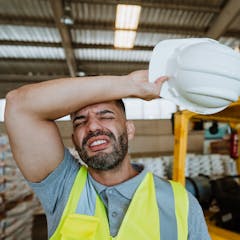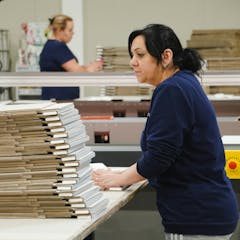
Articles on Workplace health
Displaying 1 - 20 of 59 articles

New research sheds light on the benefits of mindfulness exercises and training in the workplace.

Menstruation is a normal part of life but only a minority of workplaces have policies supporting workers who experience pain and discomfort as a result of their period.

The way jobs are structured affects employee mental health, an analysis of more than 18,000 workers shows.

Acknowledging that factors like the built environment, social and health systems, and outdated policies are the problems — rather than people — is a step towards healthier and safer workplaces.

Employers have a duty to address work stressors and make adjustments for workers with long-term illnesses.

Menopause can be a key factor in some women’s decision to retire early. But with the right interventions, workplaces can enable women to manage their symptoms and remain in the workforce.

This Labour weekend we celebrate the eight-hour workday. But with technology blurring the line between job and home, we need to ask why our workplace law hasn’t kept pace with other countries.

The work environment is a social determinant of health. However, work has been underused as a lever to address health inequalities.

Our research shows office noise increases the likelihood of people wanting to reclaim ‘personal space’, along with antisocial behaviour and disagreements.

Much of the knowledge firms can access about supporting employee mental health is based on the experience of large organisations with significant resources.

Having interviewed advisers to past and present prime ministers in Australia, Britain, Canada and New Zealand, my new research shows how crucial it is to recruit and train staff – before an election.

Workplaces are increasingly recognizing that productive employees seek out workplaces that prioritize mental well-being and offer flexible working conditions.

In the past, workers have been warned not to disclose their mental illness at work for fear of discrimination. But there can be many positives to telling your boss.

A growing body of evidence shows that the emotional health and well-being of the workforce is of equal or greater importance than physical safety.

While employee resilience seems appealing — especially in the current uncertain and unpredictable time we are living in — overusing it can actually jeopardize an organization’s effectiveness.

Disturbed sleep can worsen depressive symptoms of health care workers whose jobs come with high levels of emotional labor and work-family conflict.

The future of our health system depends on recruiting and retaining passionate and highly skilled health-care workers. It’s essential to build work environments where they feel supported and safe.

Two years of pandemic have put a severe strain on the mental health of America’s workers. Employers with a plan in place will be best equipped to help them cope.

To get more workers to be active, public health messaging must recognize the important role employers can play in creating the conditions for workers to focus on exercise.

Routine collection of work information from people testing positive for COVID-19 from the start of the pandemic would have enabled better understanding of the role of workplaces in transmission.
